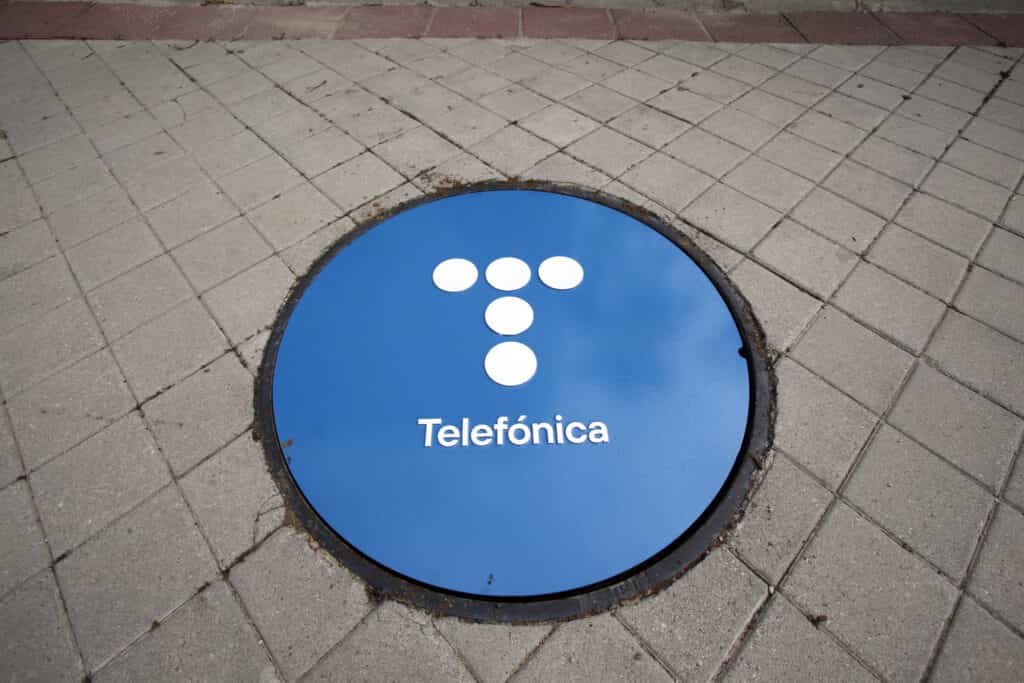Telefónica Spain has set a date for one of its most anticipated moves in the broadband market: in late November 2025, it will commercially activate its next-generation fiber optic network, XGS-PON, with residential speeds starting at 2 Gbps symmetrical and technical capacity to scale up to 10 Gbps in the future.
Until now, the company offered a maximum speed of 1 Gbps with GPON. With this switch, Telefónica takes a step into a technology already present in parts of the Spanish market, used by operators like Orange, DIGI, and Adamo, who have been marketing ultra-fast connections based on this standard for months.
XGS-PON: the necessary evolution
The current GPON technology, which predominates Telefónica’s network, offers a maximum of 2.5 Gbps download and 1.25 Gbps upload, shared among multiple users. This has supported plans of 300 Mbps, 600 Mbps, or 1 Gbps but is now approaching its capacity limits.
With XGS-PON (10 Gbps symmetrical over the shared segment), Telefónica will be able to quadruple available capacity, improve latency, and ensure stability even in high-demand environments. This new standard is crucial for enabling emerging services like 8K video, immersive virtual reality experiences, cloud gaming without lag, or teleworking with critical applications.
The transition will maintain coexistence between GPON and XGS-PON since each uses different wavelengths on the same fiber, allowing for a gradual migration without service interruptions.
Comparison with other operators already offering XGS-PON in Spain
| Operator | Max Speed (XGS-PON) | Approximate Coverage | Estimated Price* | Remarks |
|---|---|---|---|---|
| Telefónica (Movistar) | 2 Gbps initial (up to 10 Gbps in future) | >90% of homes with Movistar fiber | Pending announcement | Launching Nov. 2025, broader national coverage |
| Orange | 10 Gbps symmetrical | 7-8 million homes | ~65 €/month | Includes WiFi 6 router and premium gamer options |
| DIGI | 10 Gbps symmetrical | Own coverage and expanding NEBA | From 25 €/month | Lowest market price for XGS-PON |
| Adamo | 8 Gbps symmetrical | Rural and semiurban areas | From 29 €/month | Focus on deployments in low-competition zones |
*Estimated prices as of August 2025; may vary with promotions or bundles.
Compared to Orange and DIGI, which already sell 10 Gbps symmetrical in selected areas, Telefónica will start with 2 Gbps as the base speed for premium customers and high-end convergent plans, leaving the door open for scaling as adoption and hardware demand grow.
Hardware and compatibility: WiFi 7 as an ally
To leverage these new speeds, Telefónica will launch the Smart WiFi 7 router, compatible with XGS-PON and tri-band (including the new 6 GHz band). This standard will better handle data flow in wireless connections, reducing latency and increasing capacity in households with multiple devices.
For wired connections, exceeding 2.5 Gbps will require 5 or 10 Gbps network cards and Ethernet cables of Cat 6A or higher. Currently, such hardware is mainly found in high-end equipment, workstations, or high-performance gaming setups.
Strategy and suppliers
Telefónica has opted for deployment with Huawei and Nokia equipment in its OLTs, ultimately discarding the open-source hardware and software approach from the Open Broadband project.
This contrasts with DIGI, which has chosen a single Chinese provider, and Adamo, which combines different manufacturers depending on deployment zones. Telefónica’s mixed strategy aims to balance reliability, technical support, and risk diversification.
Market impact
With over 90% of Spanish households covered by its fiber network, Telefónica’s entry into the XGS-PON market at scale could force competitors to adjust prices or increase speeds. While it won’t be the first to offer this technology, it will be the one with the broadest reach, increasing competitive pressure and accelerating the transition from GPON to XGS-PON nationwide.
The big question is whether Movistar will aim to make 2 Gbps the standard in the medium term or reserve those speeds for a niche of premium clients, leaving the majority on GPON at 1 Gbps.
Frequently asked questions (FAQ)
What’s the difference between XGS-PON and GPON?
XGS-PON offers up to 10 Gbps symmetrical, compared to GPON’s 2.5/1.25 Gbps, resulting in higher capacity, lower latency, and improved stability.When will Movistar customers be able to subscribe to XGS-PON?
The launch is scheduled for late November 2025, with a progressive deployment starting in major cities.Why will Telefónica start with 2 Gbps instead of 10 Gbps?
The company intends a gradual adoption, ensuring hardware compatibility and aligning offerings with actual demand before scaling up.Which operators in Spain already offer XGS-PON?
Currently, Orange, DIGI, and Adamo market connections between 8 and 10 Gbps symmetrical in certain areas, though with less coverage than Telefónica.
Source: Telefónica launches XGS-PON

